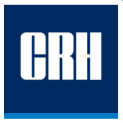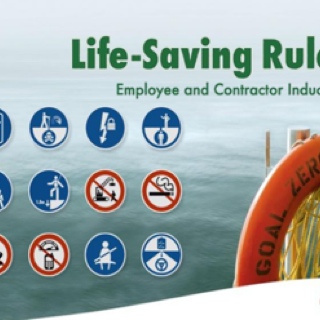Title Page
-
Conducted on
-
Prepared by
-
Location
-
Nature of work
Electrical Hazards
-
1. Poor wiring and defective electric wires
2. Outlets close to water and pouring water on electrical fires
3. Wet hands
4. Unguarded energized equipment
5. Overloading extension cords
6. Light bulbs near flammable materials
7. Overheating electrical equipment
8. Improper grounding
Electrical Safety Do's and Dont's
-
Do:
1. Do inspect all electrical equipment daily prior to use, and tag as needed and report damaged tools to supervisor.
2. Do survey the work site for overhead power lines and other electrical hazards when using ladders or working platforms. Maintain the required distance from electrical equipment and conductors. This distance depends on the voltage hazard.
3. Do provide adequate overload and short-circuit protection for safe operation. The interrupting capacity of all breakers and fuses must be sufficient to clear the fault current rapidly and without damage to itself.
4. Do provide cord protection for flexible cords and cables passing through doorways or other pinch points.
5. Do keep a fire extinguisher on work site at ALL times. The standard procedure for fighting electrical fires is to open the circuit and then apply an approved extinguishing agent. A carbon dioxide (CO2) extinguisher offers the advantage of extinguishing the fire, cooling the apparatus, leaving no residue, and having no adverse affect on the insulation and metal parts; it may be used on live circuits. CO2 should not be used in confined spaces, unless a breathing apparatus is used. A dry chemical extinguisher may be used; however it will leave a residue.
6. Do check all electrical equipment and notify others that are also connected to the power source before resetting GFCI or breakers.
7. Do use a GFCI on all construction sites.
Do Not:
1. Do not mix water and electricity. Keep electrical equipment, hands and feet, and working surface dry.
2. Do not use a length or size (wire gauge) extension cord that exceeds the max recommended by tool manufacturer.
3. Do not splice extension cords with electrical tape. Splices should be approved permanent splices. Hard service flexible cords 12 AWG or larger may be repaired if spliced so that the splice retains the insulation, outer sheath properties, and usage characteristics of the cord being spliced.
4. Do not leave extension cords in walk ways or work areas causing a trip hazard.
5. Do not use worn frayed or damaged cords
6. Do not fasten extension cords with staples, hang from nails, or suspend from wire.
Questions
-
Do all employees fully understand electrical hazards and the preventive measures when working with electrical tools and equipment?
-
In case of an emergency, are all employees aware of first aid and emergency procedures?
-
Do all employees know what a LOTO procedure is for?
-
Are there any defective or faulty electrical equipment used within the premises?
-
Are there any bad incidents which involved the use of electrical machinery and the like?
Confirmation
-
Competent Person (Full Name and Signature)
-
By signing this, you confirm that the information discussed during this meeting were fully understood.
-
Click + to add signee who participated during the toolbox talk meeting
Signee
-
Full Name and Signature
-
Full Name and Signature
-
Full Name and Signature











